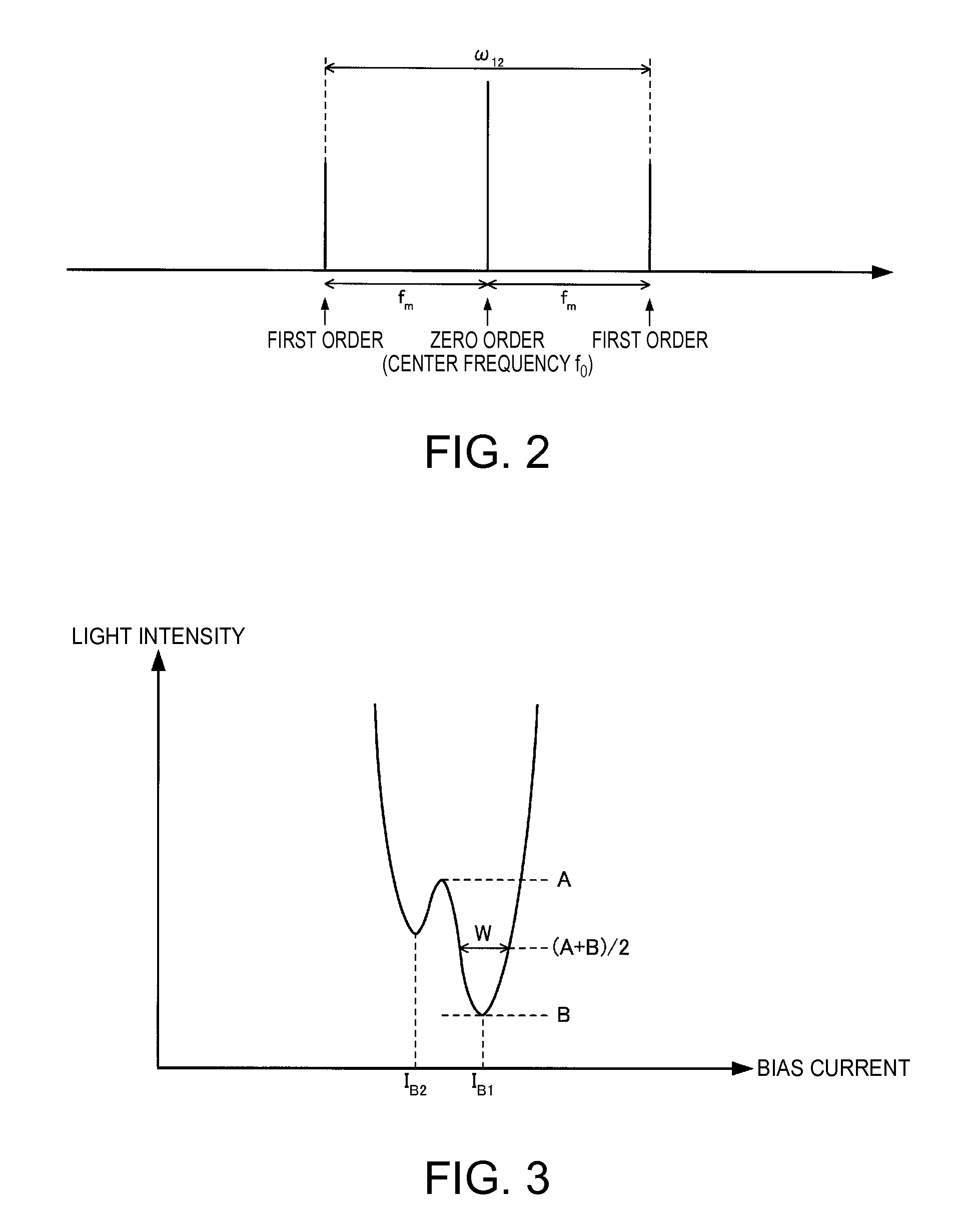Atomic oscillator, electronic apparatus, and moving object
a technology of electronic equipment and moving objects, applied in the direction of preselected time interval producing apparatus, automatic control, instruments, etc., to achieve the effect of high frequency stability and high reliability
- Summary
- Abstract
- Description
- Claims
- Application Information
AI Technical Summary
Benefits of technology
Problems solved by technology
Method used
Image
Examples
first embodiment
1-1. First Embodiment
Configuration of Atomic Oscillator
[0054]FIG. 1 is a diagram showing a configuration example of an atomic oscillator according to an embodiment. As shown in FIG. 1, an atomic oscillator 1 according to the first embodiment includes a semiconductor laser 10, a neutral density filter (ND filter) 11, a quarter wavelength plate 12, a gas cell 13, a light detector 14, a detector circuit 16, a voltage controlled crystal oscillator (VCXO) 17, a modulation circuit 18, a low-frequency oscillator 19, a frequency transform circuit 20, a detector circuit 21, a current control circuit 22, a low-frequency oscillator 23, a constant current circuit 24, an MPU 25, a drive circuit 27, and a frequency transform circuit 28. In addition, the atomic oscillator 1 according to the embodiment may have a configuration in which a part of the constituents (respective units) in FIG. 1 is appropriately omitted or changed or a configuration in which other constituents are added thereto.
[0055]Th...
second embodiment
1-2. Second Embodiment
[0108]According to the atomic oscillator 1 of a second embodiment, the MPU 25 determines whether or not it is necessary to change the setting of the bias current before the initial sweep processing in the bias current automatic setting processing and performs the sweep processing and the re-sweep determination processing only when necessary. Since the configuration of the atomic oscillator 1 of the second embodiment is the same as that of the first embodiment (FIG. 1), the depiction and the description thereof will be omitted. In addition, since functions of the respective parts other than the MPU 25 are the same as those in the first embodiment, the description thereof will be omitted.
[0109]In this embodiment, the MPU 25 performs adjustment determination processing of setting the bias current to be supplied to the semiconductor laser 10 before the sweep processing, comparing the value of the intensity of the light detected by the light detector 14 with the val...
application examples
4. Application Examples
[0151]According to the atomic oscillator of the aforementioned embodiments, Zeeman Splitting occurs in the energy levels of the alkali metal atoms if a magnetic field is applied to the gas cell 13, and the frequency difference ω12 of the resonance light pair which causes the EIT phenomenon varies depending on intensity of the magnetic field (the oscillation frequency varies as a result). By utilizing this property, it is possible to apply the atomic oscillator according to the embodiments to a magnetic sensor.
[0152]In addition, since the atomic oscillator according to the embodiments can create a significantly stable quantum interference state (quantum coherence state) of the alkali metal atoms, it is possible to realize a light source used for quantum information devices such as a quantum computer, a quantum memory, and a quantum cryptographic system by extracting the resonance light pair which is incident on the gas cell 13.
[0153]The invention is not limited...
PUM
 Login to View More
Login to View More Abstract
Description
Claims
Application Information
 Login to View More
Login to View More - R&D
- Intellectual Property
- Life Sciences
- Materials
- Tech Scout
- Unparalleled Data Quality
- Higher Quality Content
- 60% Fewer Hallucinations
Browse by: Latest US Patents, China's latest patents, Technical Efficacy Thesaurus, Application Domain, Technology Topic, Popular Technical Reports.
© 2025 PatSnap. All rights reserved.Legal|Privacy policy|Modern Slavery Act Transparency Statement|Sitemap|About US| Contact US: help@patsnap.com



